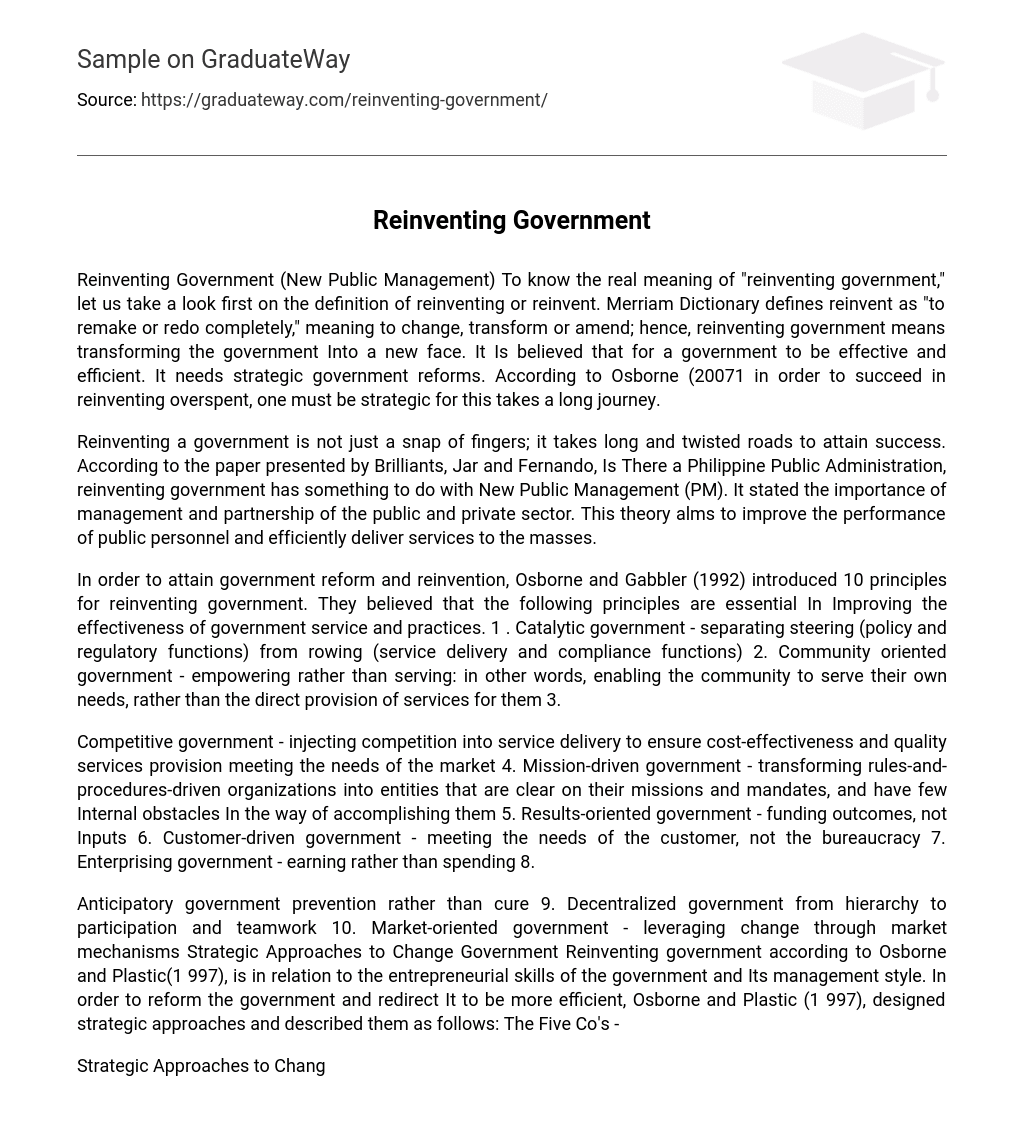The term “reinventing government” refers to the complete remake or redoing of the government. In order for a government to be effective and efficient, it is believed that strategic reforms are necessary. According to Osborne (2007), reinventing government requires a long journey and strategic thinking.
Reinventing government is not a simple task, but rather a complex and lengthy journey towards success. In a paper titled “Is There a Philippine Public Administration” presented by Brilliants, Jar, and Fernando, the concept of reinventing government is closely linked to New Public Management (PM). The paper highlights the significance of effective management and collaboration between the public and private sectors. The aim of this theory is to enhance the performance of public personnel and ensure efficient delivery of services to the general public.
In the pursuit of government reform and reinvention, Osborne and Gabbler (1992) presented a set of 10 principles for reinventing government. These principles were deemed crucial for enhancing the efficiency of government service and practices.
- Catalytic government – separating steering (policy and regulatory functions) from rowing (service delivery and compliance functions)
- Community oriented government – empowering rather than serving: in other words, enabling the community to serve their own needs, rather than the direct provision of services for them
- Competitive government – injecting competition into service delivery to ensure cost-effectiveness and quality services provision meeting the needs of the market
- Mission-driven government – transforming rules-and- procedures-driven organizations into entities that are clear on their missions and mandates, and have few Internal obstacles In the way of accomplishing them
- Results-oriented government – funding outcomes, not Inputs
- Customer-driven government – meeting the needs of the customer, not the bureaucracy
- Enterprising government – earning rather than spending
- Anticipatory government prevention rather than cure
- Decentralized government from hierarchy to participation and teamwork
- Market-oriented government – leveraging change through market mechanisms





